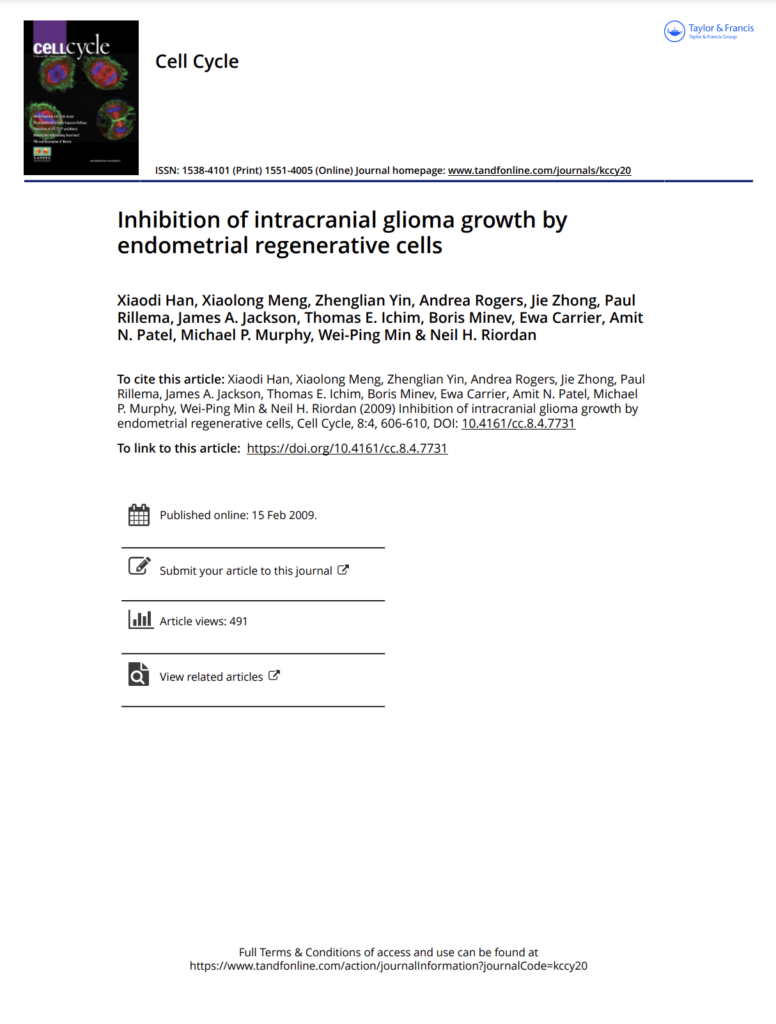February 2009
Inhibition of intracranial glioma growth by endometrial regenerative cells.
Journal Citation
Cell Cycle. 2009 Feb 15;8(4):606-10. Epub 2009 Mar 2
Authors
Han X, Meng X, Yin Z, Rogers A, Zhong J, Rillema P, Jackson JA, Ichim TE, Minev B, Carrier E, Patel AN, Murphy MP, Min WP, Riordan NH.
Abstract
Animal studies have demonstrated that selective tropism of mesenchymal stem cells (MSC) for glioma may be used as a means of selective delivery of cytotoxic payloads. Endometrial Regenerative Cells (ERC) are a population of mesenchymal-like cells which possesse pluripotent differentiation capacity and is characterized by unique surface markers and growth factor production. In this study we sought to determine whether unmanipulated ERC would alter the growth of glioma using the aggressive C6/LacZ7 (C6) into Sprague Dawley rat model. ERC administration by intravenous (i.v.) or intratumoral (i.t.) showed significant inhibition of glioma: volume reduction of 49% after i.v. treatment (p < 0.05), and about 46% i.t. treatment (p < 0.05). Tumor reduction was associated with inhibition of angiogenesis and reduced numbers of CD133 positive cells in the incranial tumor. Despite the angiogenic potential of ERC in the hindlimb ischemia model, these data support a paradoxical tumor inhibitory activity of ERC. Further studies are needed to determine the qualitative differences between physiological angiogenesis, which seems to be supported by ERC and tumor angiogenesis which appeared to be inhibited.

